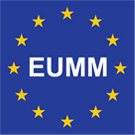Co-operation between the Georgian Ministry of Internal Affairs and the EU Monitoring Mission was further enhanced on Friday 22 May with the signing of an important document which increases the areas adjacent to the South Ossetian and Abkhazian administrative boundary lines where EUMM has the right to conduct unannounced inspections of Georgian Police facilities.
An annex to the Memorandum of Understanding (MOU) between EUMM and the Ministry was signed in the office of the Minister of Internal Affairs by the Head of Mission Ambassador Haber and the Minister Mr Merabishvili.
The importance of the annex is that the zones adjacent to South Ossetia and Abkhazia, mentioned in the original MOU are now clearly defined as the Neighbouring Districts to South Ossetia and Abkhazia: the Tbilisi administrated Georgian districts bordering South Ossetia and Abkhazia, namely: KAZBEGI, DUSHETI, MTSKHETA, KASPI, GORI, KARELI, KHASHURI, SACHKERE, ONI and MESTIA, TSALENJIKHA, ZUGDIDI.
In particular EUMM now has the right to conduct unannounced inspections of all Georgian police facilities in the areas as well as in the Neighbouring districts to South Ossetia and Abkhazia.
A Memorandum of Understanding was originally signed between EUMM and the Georgian Ministry of Internal Affairs (MOI) on 10 October 2008. The arrangement established a mechanism of co-operation and consultation for the prevention and resolution of disputes. The MOI agreed to inform EUMM of any police forces it planned to deploy in the zones adjacent to Abkhazia and South Ossetia, and more specifically it agreed to provide a detailed breakdown of the number of forces deployed, their location and the type of weaponry available. This information covers regular as well as special police forces.
The MOI agreed not to deploy heavy armaments in these areas, to inform EUMM in advance of the deployment of armed vehicles in the direction of and into these areas and recognised EUMM’s right to perform unannounced inspections to check these matters.
As well as greater transparency, the reporting of incidents and greater co-operation and co-ordination, one of the benefits of this agreement has been the greater visibility and recognition of police forces with respect of their uniforms, vehicles and other equipment which are now clearly distinguishable, helping to avoid misunderstandings .
An annex to the Memorandum of Understanding (MOU) between EUMM and the Ministry was signed in the office of the Minister of Internal Affairs by the Head of Mission Ambassador Haber and the Minister Mr Merabishvili.
The importance of the annex is that the zones adjacent to South Ossetia and Abkhazia, mentioned in the original MOU are now clearly defined as the Neighbouring Districts to South Ossetia and Abkhazia: the Tbilisi administrated Georgian districts bordering South Ossetia and Abkhazia, namely: KAZBEGI, DUSHETI, MTSKHETA, KASPI, GORI, KARELI, KHASHURI, SACHKERE, ONI and MESTIA, TSALENJIKHA, ZUGDIDI.
In particular EUMM now has the right to conduct unannounced inspections of all Georgian police facilities in the areas as well as in the Neighbouring districts to South Ossetia and Abkhazia.
A Memorandum of Understanding was originally signed between EUMM and the Georgian Ministry of Internal Affairs (MOI) on 10 October 2008. The arrangement established a mechanism of co-operation and consultation for the prevention and resolution of disputes. The MOI agreed to inform EUMM of any police forces it planned to deploy in the zones adjacent to Abkhazia and South Ossetia, and more specifically it agreed to provide a detailed breakdown of the number of forces deployed, their location and the type of weaponry available. This information covers regular as well as special police forces.
The MOI agreed not to deploy heavy armaments in these areas, to inform EUMM in advance of the deployment of armed vehicles in the direction of and into these areas and recognised EUMM’s right to perform unannounced inspections to check these matters.
As well as greater transparency, the reporting of incidents and greater co-operation and co-ordination, one of the benefits of this agreement has been the greater visibility and recognition of police forces with respect of their uniforms, vehicles and other equipment which are now clearly distinguishable, helping to avoid misunderstandings .
